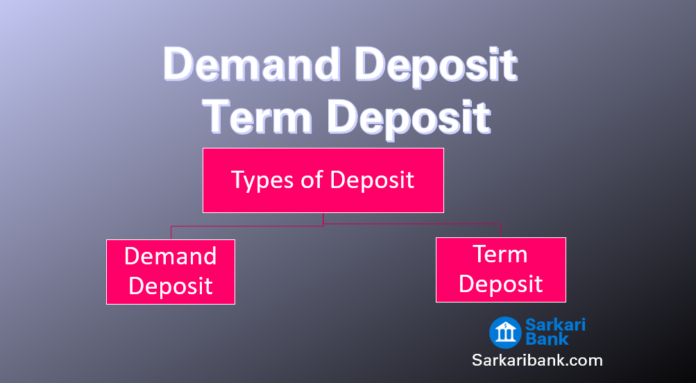Deposit: Demand Deposit and Term Deposit
Demand Deposit: demand deposit and term deposit
The deposit which is payable on demand of the customer i-e known as the demand deposit. demand deposit and term deposit
There are two types of demand deposit:
- Saving Account
- Current Account
Saving Account (SA):
- It is open to developing saving habits among people.
- The rate of interest paid by bank 4% per annum up to 1 lakhs which are regulated by RBI & above 1 Lakhs depends on the bank. demand deposit and term deposit
- Example: BMB=4.5%, Yes Bank, Kotak Mahindra Bank=6.5% (approx)
- Banks are calculating interest on the daily basis from April 2010.
- The minimum interest rate is determined by RBI but regulated by respective banks.
Current Account (CA):
- It is open for business purpose activity.
- Banks are not paying any interest in current Account.
- Overdraft Facility is provided to current account holders.
- Current Account is regulated by RBI
- PAN card is necessary and this account is open with minimum 10000 balance.
Difference between RTGS and NEFT
Definition of Bank and Banking Regulation Act
Term Deposit:
The deposit which is deposited for a particular term /time/period is called Time/Term deposit. demand deposit and term deposit
There are two types of term deposit:
- Fixed Deposit
- Recurring Deposit
Fixed deposit (FD):
- If a lump sum (approx) amount is deposited at a time for a particular period is known as the Fixed Deposit.
- The interest rate on the Fixed deposit is decided by respective banks only based on market value.
- Minimum Tenure: 7 days, Maximum Tenure=10years
Recurring Deposit (RD):
- If any particular amount is deposited after every particular interval/Period.
- The interest rate on RD decided by respective banks only based on market value. Example: 2000/- Per month for 1 year
- Minimum Tenure, Maximum Tenure: 10 years
You may like it.






